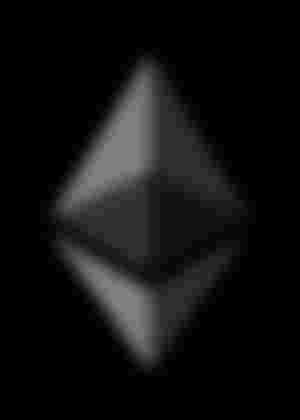First of all, Ethereum is a system, which means it is not controlled by any single governing entity. An absolute majority of online services, businesses and enterprises are built on a centralized system of governance. This approach has been used for hundreds of years, and while history proved time and time again that it’s flawed, its implementation is still necessary when the parties don’t trust each other.

A centralized approach means single-entity control, but it also means a single point of failure, which makes apps and online-servers utilizing this system extremely vulnerable to hacker attacks and even power outages. Moreover, most social networks and other online servers require users to provide at least some degree of personal information, which is then stored on their servers. From there, it can be easily stolen by the company itself, its rogue workers or hackers.
Ethereum, being a decentralized system, is fully autonomous and is not controlled by anyone at all. It has no central point of failure, as it is being run from thousands of volunteers’ computers around the globe, which means it can never go offline. Moreover, users’ personal information stays on their own computers, while content, such as apps, videos, etc., stays in full control of its creators without having to obey by the rules imposed by hosting services such as App Store and YouTube.
Secondly, it is important to understand that even though constantly compared to each other, Ethereum and Bitcoin are two completely different projects with entirely different goals. Bitcoin is the first ever cryptocurrency and a money-transfer system, built on and supported by a distributed public ledger technology called the Blockchain.

Ethereum took the technology behind Bitcoin and substantially expanded its capabilities. It is a whole network, with its own Internet browser, coding language and payment system. Most importantly, it enables users to create decentralized applications on Ethereum’s Blockchain.
Those applications can either be entirely new ideas or decentralized reworks of already existing concepts. This essentially cuts out the middleman and all the expenses associated with the involvement of a third party. For example, the only profit that comes from users ‘liking’ and ‘sharing’ their favorite musician’s posts on Facebook is generated from an advertisement placed on their page and it goes directly to Facebook. In an Ethereum version of such social network, both the artists and the audience would receive awards for positive communication and support. Similarly, In a decentralized version of Kickstarter, you won’t be getting just some artifact for your contribution to the company, you will be receiving a part of the company’s future profits. Finally, Ethereum-based applications will remove all sorts of payments to third parties for fascinating any kind of services.
In short, Ethereum is a public, open-source, Blockchain-based distributed software platform that allows developers to build and deploy decentralized applications.
As it was mentioned before, Ethereum is a decentralized system, which means it utilizes a peer-to-peer approach. Every single interaction happens between and is supported only by the users taking part in it, with no controlling authority being involved.
The entire Ethereum system is supported by a global system of so-called ‘nodes.’ Nodes are volunteers who download the entire Ethereum’s Blockchain to their desktops and fully enforce all the consensus rules of the system, keeping the network honest and receiving rewards in return.
Those consensus rules, as well as numerous other aspects of the network, are dictated by ‘smart contracts.’ Those are designed to automatically perform transactions and other specific actions within the network with parties that you don’t necessarily trust. The terms for both parties to fulfill are pre-programmed into the contract. The completion of these terms then triggers a transaction or any other specific action. Many people believe that smart contracts are the future and will eventually replace all other contractual agreements, as the implementation of smart contracts provides security that is superior to traditional contract law, reduce transaction costs associated with contracting and establish trust between two parties.
Moreover, the system also provides its users with the Ethereum Virtual Machine (EVM), which essentially serves as a runtime environment for smart contracts based on Ethereum. It provides users with security to execute an untrusted code while ensuring that the programs don’t interfere with each other. EVM is completely isolated from the main Ethereum network, which makes it a perfect sandbox-tool for testing and improving smart contracts.
The platform also provides a cryptocurrency token called ‘Ether.’
How ethereum was created?
In late 2013, Vitalik Buterin described his idea in a white paper, which he sent out to a few of his friends, who in turn sent it out further. As a result, about 30 people reached out to Vitalik to discuss the concept. He was waiting for critical reviews and people pointing out critical mistakes in the concept, but it never happened.
The project was publicly announcd in January 2014, with the core team consisting of Vitalik Buterin, Mihai Alisie, Anthony Di Iorio, Charles Hoskinson, Joe Lubin and Gavin Wood. Buterin also presented Ethereum on stage at a Bitcoin conference in Miami, and just a few months later the team decided to hold a crowdsale of Ether, the native token of the network, to fund the development.

Is it a cryptocurrency?
By definition, Ethereum is a software platform that aims to act as a decentralized Internet as well as a decentralized app store. A system like this needs a currency to pay for the computational resources required to run an application or a program. This is where ‘Ether’ comes into play.
Ether is a digital bearer asset and it doesn’t require a third party to process the payment. However, it doesn’t only operate as a digital currency, it also acts as ‘fuel’ for the decentralized apps within the network. If a user wants to change something in one of the apps within Ethereum, they need to pay a transaction fee so that the network can process the change.
The transaction fees are automatically calculated based on how much ‘gas’ an action requires. The amount of required fuel is calculated based on how much computing power is necessary and how long it will take to run.
Is Ethereum like Bitcoin?

Ethereum and Bitcoin might be somehow similar when it comes to the cryptocurrency aspect, but the reality is that they are two completely different projects with completely different goals. While Bitcoin has established itself as a relatively stable and the most successful cryptocurrency to date, Ethereum is a multipurpose platform with its digital currency Ether being just a component of its smart contract applications.
Even when comparing the cryptocurrency aspect, the two projects appear to be vastly different. For instance, Bitcoin has a hard cap of 21 mln Bitcoins that can ever be created, while a potential supply of Ether can be practically endless. Moreover, Bitcoin’s average block mining time is 10 minutes, whereas Ethereum’s aims to be no more than 12 seconds, which means quicker confirmations.
Another major difference is that these days successful Bitcoin mining requires tremendous amounts of computing power and electricity and is only possible if using industrial-scale mining farms. On the other hand, Ethereum’s proof-of-work algorithm encourages decentralized mining by individuals.
Perhaps the most important difference between the two projects is that Ethereum’s internal code is Turing complete, which means that literally everything can be calculated as long as there is enough computing power and time to do so. Bitcoin doesn’t have this capability. While a Touring complete code provides Ethereum users with practically limitless possibilities, its complexity also means potential security complications.
How Ethereum works?
As it was mentioned before, Ethereum is based on Bitcoin’s protocol and its Blockchain design but is tweaked so that applications beyond money systems can be supported. The two Blockchains’ only similarity is that they store entire transaction histories of their respective networks, but Ethereum’s Blockchain does a lot more than that. Besides the history of transactions, every node on Ethereum network also needs to download the most recent state, or the current information, of each smart contract within the network, every user’s balance and all the smart contract code and where it’s stored.
Essentially, the Ethereum Blockchain can be described as a transaction-based state machine. When it comes to computer science, a state machine is defined as something capable of reading a series of inputs and transitioning to a new state based on those inputs. When transactions are executed, the machine transitions into another state.
Every state of Ethereum consists of millions of transactions. Those transactions are grouped to form ‘blocks,’ with each and every block being chained together with its previous blocks. But before the transaction can be added to the ledger, it needs to be validated, that goes through a process called mining.
Mining is a process when a group of nodes apply their computing power to completing a ‘proof of work’ challenge, which is essentially a mathematical puzzle. The more powerful their computer is, the quicker it can solve the puzzle. An answer to this puzzle is in itself a proof of work, and it guarantees the validity of a block.
A lot of miners around the world are competing with each other in an attempt to create and validate a block, as every time a miner proves a block new Ether tokens are generated and awarded to said miner. Miners are a backbone of the Ethereum network, as they not only confirm and validate transactions and any other operations within the network but also generate new tokens of the network’s currency.
What can Ethereum be used for?
First and foremost, Ethereum allows developers to build and deploy decentralized applications. Moreover, any centralized services can be decentralized using the Ethereum platform. The potential of Ethereum platform for building apps not limited by anything other than the creators’ creativity.
Decentralized applications have a potential of changing the relationship between companies and their audiences completely. These days there are a lot of services that charge commission fees for simply providing an escrow service and a platform for users to trade goods and services. On the other hand, Ethereum’s Blockchain’s can enable customers to trace the origins of product they’re buying, while the implementation of smart contracts can ensure safe and fast trading for both parties without any intermediary.
The Blockchain technology itself has a potential of revolutionizing web-based services as well as industries with long-established contractual practices. For example, an insurance industry in the US possesses more than $7 bln inclined life insurance money, which can be redistributed fairly and transparently using Blockchain. Moreover, with the implementation of smart contracts, clients can be able to simply submit their insurance claim online and receive an instant automatic payout, considering that their claim met all the required criteria.

Essentially, the Ethereum Blockchain is capable of bringing its core principles - trust, transparency, security and efficiency - into any service, business or an industry.
Ethereum can also be used to create Decentralized Autonomous Organizations (DAO), which operate completely transparently and independently of any intervention, with no single leader. DAOs are run by programming code and a collection of smart contracts written on the Blockchain. It is designed to eliminate the need for a person or a group of people in complete and centralized control of an organization.
DAOs are owned by people who purchased tokens. However, the amount of purchased tokens doesn’t equate equity shares and ownership. Instead, tokens are contributions that provide people with voting rights.
Advantages of Ethereum:
Ethereum platform benefits from all the properties of the Blockchain technology that it runs on. It is completely immune to any third party interventions, which means that all the decentralized apps and DAOs deployed within the network can’t be controlled by anyone at all.
Any Blockchain network is formed around a principle of consensus, meaning that all the nodes within the system need to agree on every change made within it. This eliminates possibilities of fraud, corruption and makes the network tamper-proof.
The whole platform is decentralized, which means there is no possible single point of failure. Hence, all the apps will always stay online and never switch off. Moreover, the decentralized nature and cryptographic security make the Ethereum network well protected against possible hacking attacks and fraudulent activities.
THANK YOU ALL!😍




